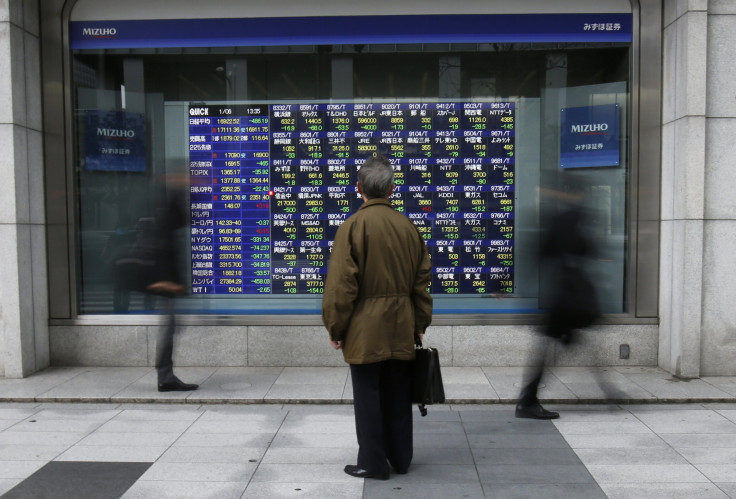Asian Shares Skid As Bullish Fed Take Investors By Surprise

(Reuters) - Asian shares extended losses on Thursday after the Federal Reserve took an upbeat view on the U.S. economy and signaled that it remains firmly on track to raise interest rates this year despite an uncertain global outlook.
A greater likelihood of higher U.S. interest rates this year helped Asian stock indexes follow Wall Street into negative territory. Japan's Nikkei slipped 0.4 percent, while MSCI's broadest index of Asia-Pacific shares outside Japan extended its drop and was down 1 percent.
Chinese shares skidded after the official Xinhua news agency said that country's stock regulator will inspect the stock margin trading business of 46 companies, amid concerns that the country's stock markets are becoming over-leveraged and vulnerable to a crash which could strain the financial system.
The Fed said that international developments would be taken into consideration, but noted that falling energy prices boosted household purchasing power even as it acknowledged a decline in certain inflation measures.
"The markets were a bit surprised that the Fed was more hawkish than expected, especially considering that many people had thought that the board members this year would be more dovish than last year's," said Hideyuki Ishiguro, senior strategist at Okasan Securities.
Four voting members from regional Feds at the policy committee this year are considered less hawkish than last year's rotating members.
On Wednesday, the Dow Jones industrial average fell 1.1 percent to a six-week low while the S&P 500 lost 1.4 percent.
The Fed's optimism and unwavering stance on future rate hikes contrasted with a recent spate of dovish policy shifts at many central banks around the world - from Europe to Canada to India.
"Most every central bank wants to weaken their currency at the moment, in contrast with the Fed," said Kaneo Ogino, director at Global-info Co in Tokyo, a foreign exchange research firm.
"The market liquidity is relatively low now, considering it is getting toward the end of the month," he added.
The diverging monetary policy outlooks helped the U.S. dollar recoup some losses this week. The dollar index, which tracks the greenback against a basket of major currencies, gained about 0.3 percent on the day to 94.751 .DXY.
Against the yen, the dollar added about 0.3 percent to 117.91 yen, while the euro slipped about 0.2 percent to $1.1271 from a high of $1.1423 hit on Tuesday. Signs of tension in Greek financial markets adding to downward pressure on the single currency.
Greek short-term bond yields hit their highest since the country's 2012 debt restructuring and Greek shares tumbled 9 percent to a 2-1/2-year low on Wednesday, as the new government in Athens appeared to be squaring up for a fight with international creditors.
The New Zealand dollar steadied after tumbling to a 3-1/2-year low on Thursday after the Reserve Bank of New Zealand opened the door to a possible rate cut.
As share prices eased, U.S. bond yields have fallen, with the 30-year yield hitting a record low of 2.273 percent on Wednesday.
The 10-year yield stood at 1.734 percent, not far from this month's low of 1.698 percent, which was its lowest level since May 2013.
The Fed repeated it will be "patient in beginning to normalize" rates, although it dropped a reference that rates will be held at the current levels "for a considerable time" -- which many traders had taken to mean about six months.
Despite the indication from the Fed that the first rate hike could come as early as in June, markets have relentlessly pushed the timing out to year-end and are plotting a much lower trajectory for future hikes.
Oil prices steadied after slumping anew overnight, with U.S. crude futures hitting near six-year lows after government data showed record-high inventories in the United States.
U.S. crude futures edged up about 0.2 percent to $44.53, having sunk as low as $44.08 on Wednesday, their lowest since April 2009.
© Copyright IBTimes 2024. All rights reserved.





















